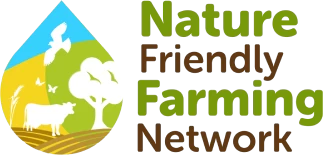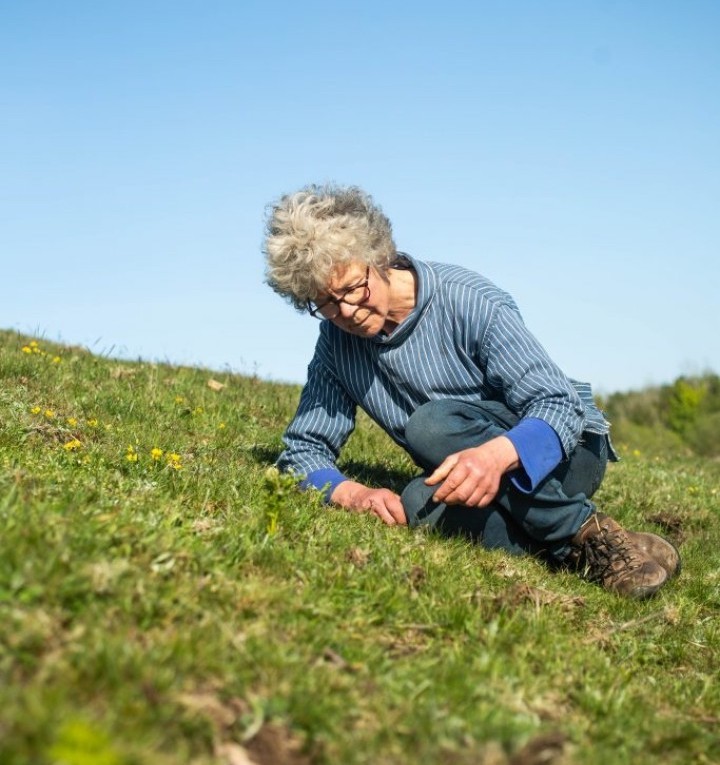But not all grasslands are equal. How they are managed can profoundly impact their value for biodiversity, climate, and farming. In the UK, so-called improved grasslands now make up a large proportion of our agricultural grassland. These grasslands have been seeded to improve agricultural production and are often made up of simple mixes of fast-growing plant species such as ryegrasses. These grasslands often require significant amounts of artificial fertilisers and need to be reseeded frequently to maintain fast growth, both of which come with a carbon cost.
More focus and understanding are being drawn to the role that more diverse grasslands, whether permanent (not reseeded) or temporary can play in securing profits and delivering environmental gain. There is a growing body of evidence highlighting that greater plant diversity can secure multiple win-wins at the farm scale. Herbal leys, for example, include a mix of deep-rooting plant and herb species, which help draw down more carbon, improve soil structure, and deliver improvements to livestock health.
The inclusion of leguminous plants, such as clover and birdsfoot trefoil, helps fix nitrogen, reducing the need for artificial fertilisers and providing a nutritious food source for hungry pollinators. At the other end of the spectrum, we have species-rich grasslands, which are ecological dynamite created over thousands of years due to a symbiotic relationship between low-impact grazing and the land. These so-called unimproved grasslands have never been ploughed or fertilised, meaning they are essential carbon stores.
Benefits of some grass and plant species
Birdsfoot trefoil is proven to be anthelmintic (natural wormers)
The long tap roots of red clover go deep down into the soil, helping draw up moisture and increase drought resilience
The taproots of legumes like black medick can break through soil pans, improving soil structure
The root structure of grasses such as cocksfoot and timothy increases soil organic matter while boosting microbacterial activity.
A diverse grassland contains essential micronutrients such as copper, cobalt, selenium, zinc and iodine, which can improve livestock health and reduce veterinary costs
Species such as plantain can help reduce nitrate leaching due to a reduced nitrate concentration in livestock urine
Our ecological partnership with grasses and herbivores has produced our native livestock breeds, an extraordinarily diverse species and ecological richness. Grasslands are some of the most important UK habitats and are vulnerable to change, requiring skilled management. Read more on how to sensitively graze.
But the benefits of grasses aren’t just above the ground. There is a great deal more to grasses out of sight. Most of the benefits of grasslands are below the surface and in the soil. Grasses in large established grassland ecosystems act as key water catchments holding water in the sponge of their root masses and as critical biodiversity reserves.
The dynamic mutual relationship between grassroots and soil biodiversity, where grasses and soil organisms benefit, simultaneously acts as a giant carbon sink, potentially tying up between 15-30% of the world’s carbon.
So all-in-all, grasslands are a planet-cooling, carbon-sinking, water-sponging, biodiversity-banking, food-donating life force. Whatever grassland you have at your disposal, some steps can be taken to improve its value for ecosystem health, climate and farm business resilience
Denise’s tips for thriving soils, biodiverse grasslands and profitable farming:
On improved grassland, identify steps to reduce chemical inputs
Rebuild and strengthen habitat infrastructure on your farm
Reconsider machinery and tractor use where possible
Arable farmers: consider incorporating grazing sheep or cattle and introducing herbal leys
Livestock farmers: pasture-feed and use herb- and species-rich, deep-rooting grass seed mixes, introduce rotational mob-grazing with periods of rest
In species-rich grasslands, identify grazing regimes which will improve the ecological condition




